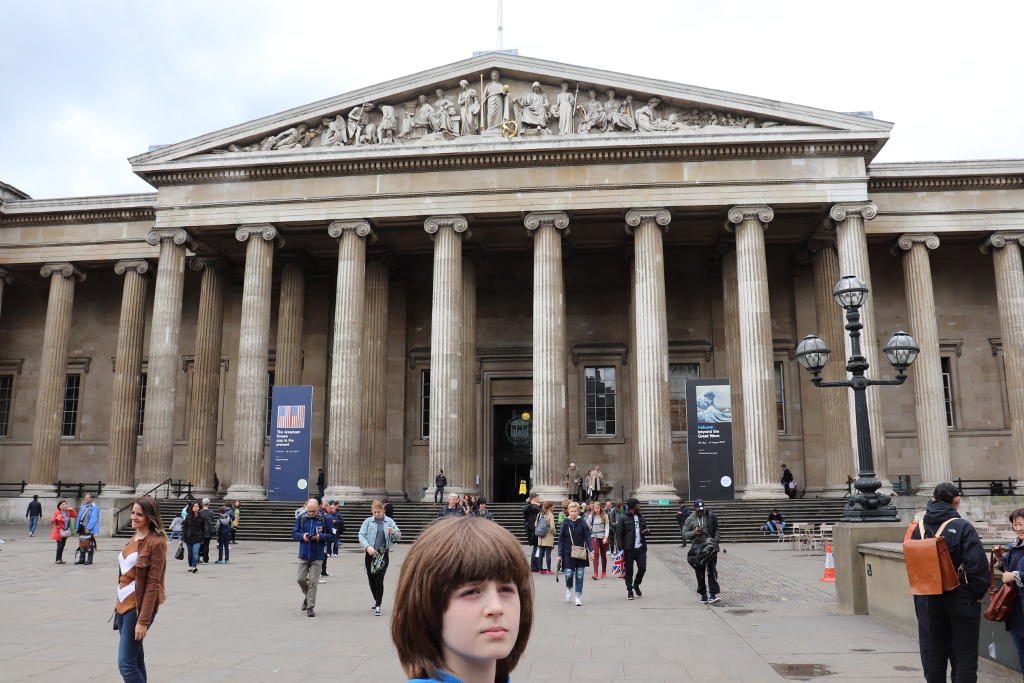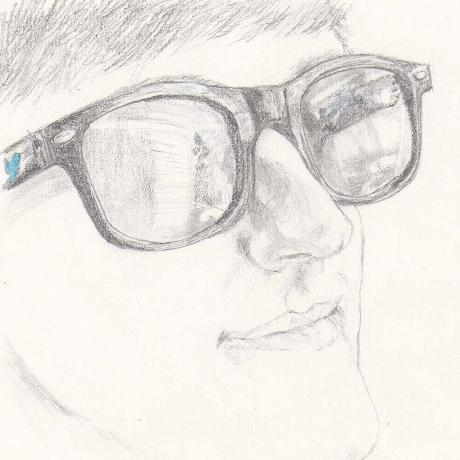Today was the day we spent visiting people we know in London. Both of them. The first was our cousin Mary, who came here a while ago to go to college. The second was some colleuges from a job I had a while back.
We woke up at a reasonable time to meet Mary for breakfast at the pub where the exterior shots for the new Sherlock series was filmed. As we should have guessed from the day before, it was cold and rainy on the way to the station. I spent a few minutes in the living room with the door open, writing about the day before, hoping that the rain would die down before we left for the station. It didn’t, but it still provided a relaxing patter of rain on the balcony roof.
By the time we found Mary, said our hellos, and got to the pub, I couldn’t feel my hands. She was prepared, with a decently-sized umbrella. Nor was she fazed when the wind would repeatadly turn her umbrella inside-out (the trick is to turn it into the wind, sometimes people don’t know that and try to push it back into shape with their hands).
Then we ate a full English breakfast at Speedy’s sandwich bar. We’re pretty much English now.


The pub was very much a hole in the wall, but space is in general a premium in London. As expected, there were pictures of the filming up on the wall, and we took our picture outside the pub. We hadn’t any concrete plans for that day, so Mary suggested we go to the British Museum. She’s literally a museum major (museum science? But don’t quote me on that), so we took her suggestion.

The British Museum is not, as one might think, a museum of British things. It is a museum of things the British stole from other places. We went through the early Egyptian artifacts through the Greek artifacts, for whom I’ve always had a soft spot. The Egyptians as a civilization lasted quite a long time, from several thousand years B.C. to around when the Romans subsumed them via Cleopatra.
One thing that’s different about Europe (from America) is that a lot of galleries and museums are free because they’re sponsored by the state. The government decided that culture is important and all that. I figure this is a good thing, in general, since then all the fun stuff from a long time ago gets preserved rather than stripped for resources. Of course, they were often stripped for resources anyway, most famously by the pyramid looters of the 19th and early 20th centuries (and before). The Greek friezes (panel carved in relief) have all been mutilated for parts and war trophies over the years. Many of them used to hold bronze weapons that have long ago been stripped. Several soldiers in relief even had their faces chiseled off by a victorious general, so the face now resides in a museum in Copenhagen.
At one point, the Acropolis was bombarded, damaging many of the friezes there. That didn’t stop the museum from doing a pretty decent reconstruction, though - they managed to piece together the layout of a lot of the exterior.
The Greeks and the Egyptians, of course, got together and wrote the Rosetta stone in Demotic, Hieroglyphics (the two Egyptian languages), and Greek. The Rosetta stone that was the key to deciphering Hieroglyphics, and now greets visitors at the back door of the museum.

So we got to see that. Then we went to the Egyptian exhibit. This was predominantly statues of rulers, deities (Egyptian pharoes were considered to be gods, also), coffins, and wall panels (generally from the interior of tombs). One head of a king was carved fron a single 20 ton block of stone that was carried by hand from a quarry 200km away (aver 100 miles).

Ellen’s favorite part of the whole museum was a small statue of a cat made out of now-rusted bronze with still-shiny gold jewlery, which we found in the Egypt exhibit.

From there we went into the Greek portion of the museum. As is stereotypical for Ancient Greece, we were greeted with marble statues of various naked gods (Aphrodite and Hermes, to cater to everyone). Less stereotypical, and more surprising, was the intricate gold jewlery. We found intricate neckelaces and wristbands that rivalled modern jewlery manufacturing in detail and precision. To be fair, though, I’m not a jewlery connessour.
From the jewlery, we went to see the friezes that were in the Pantheon, as well as those from a Lykian temple. Interestingly, the Lykian temple replica was only one of possible theorized reconstructions - it’s not unambiguous how it was originally laid out. (The Lykians are from what is now Southern Turkey, and had a distinctly Greek-like artwork. Also their language is only partially deciphered.)

It would be fascinating to teleport a Lykian to modern times to quiz them on how it was supposed to look. Ideally one that spoke English.
Sadly, we can’t.
After the museum, we walked to meet our work colleagues. Along the way we stopped by a high-end gelato shop called “Snowflake.” We all got cones and sat to rest our feet for a short while.


